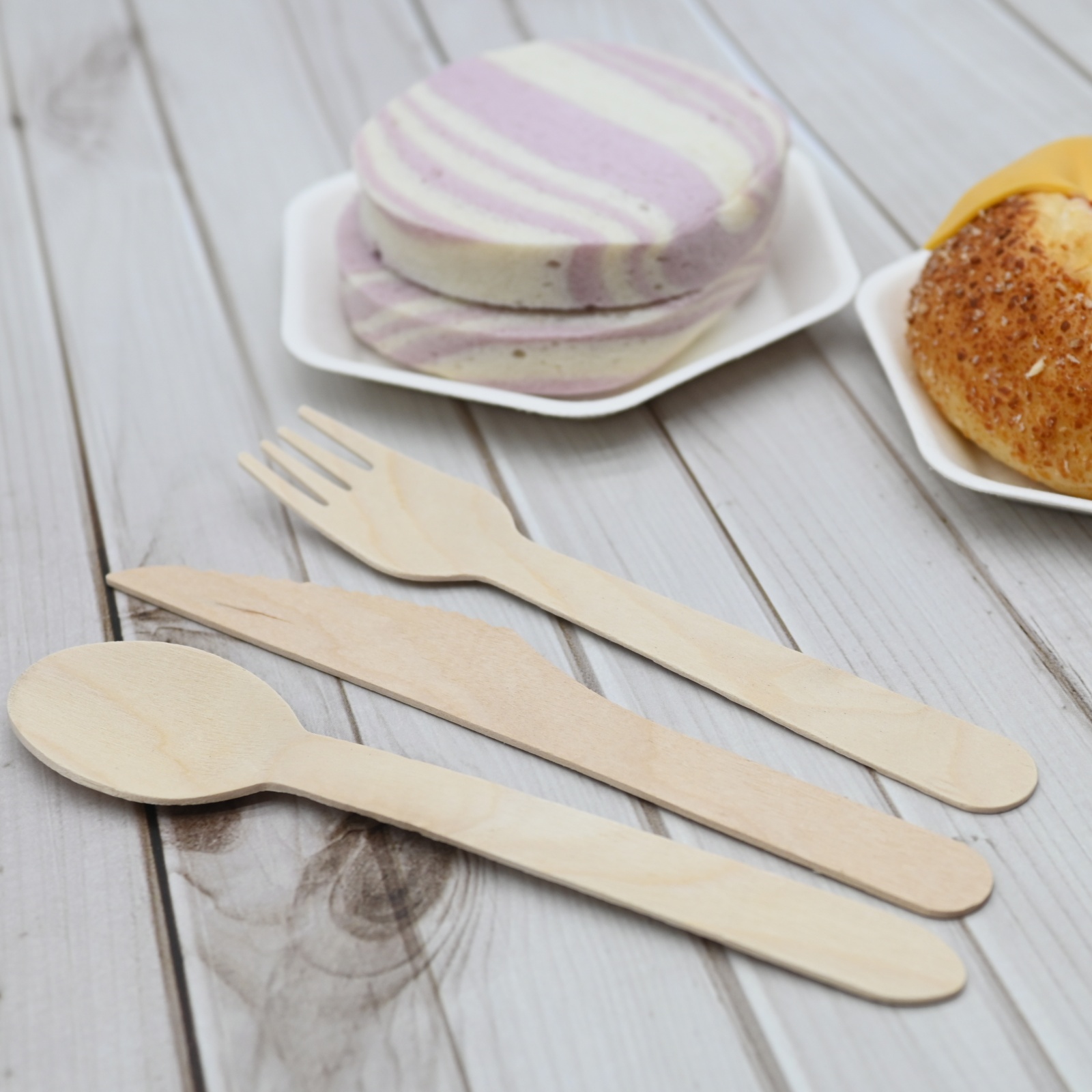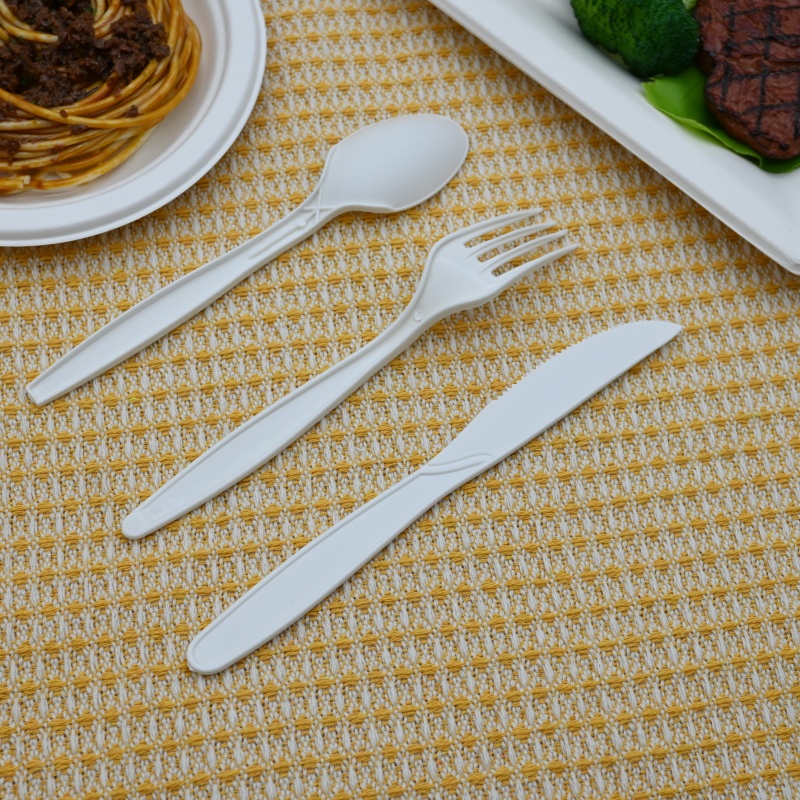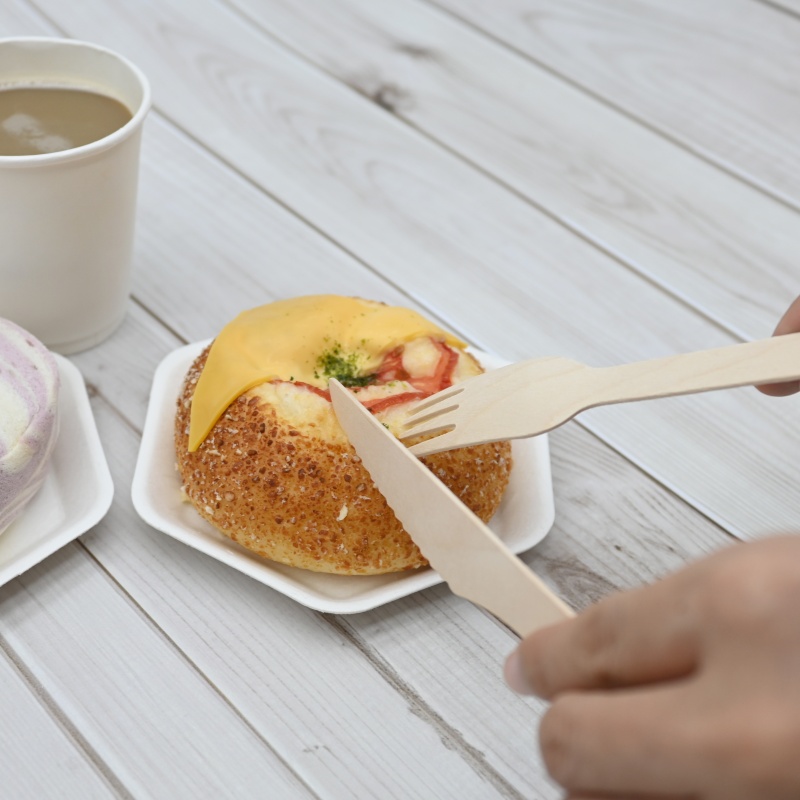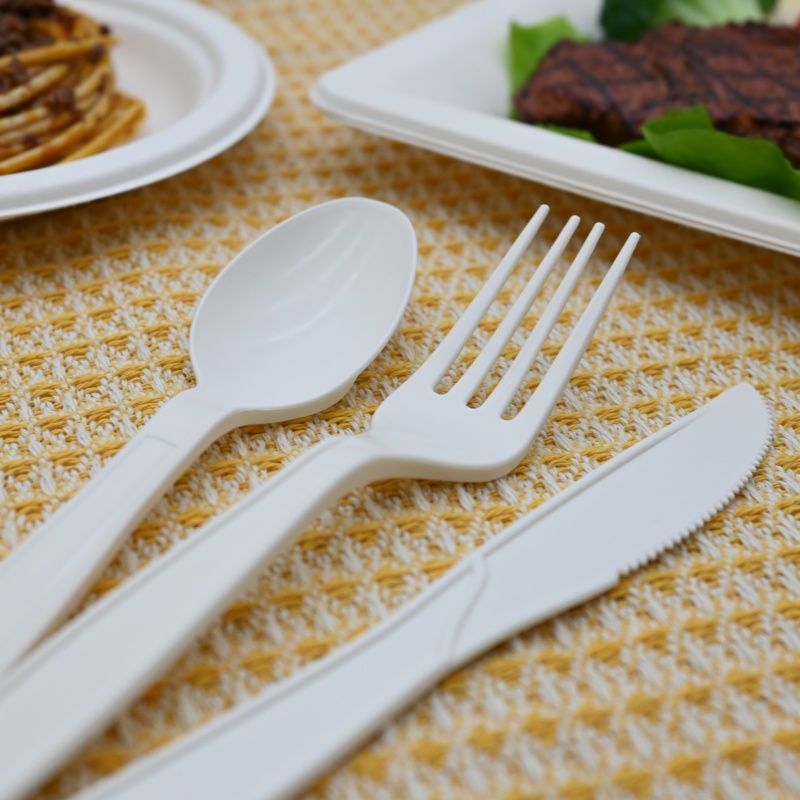In modern society, increasing environmental awareness has driven interest in sustainable tableware. Wooden cutlery and CPLA (Crystallized Polylactic Acid) cutlery are two popular eco-friendly choices that attract attention due to their different materials and characteristics. Wooden tableware is usually made from renewable wood, featuring natural textures and aesthetics, while CPLA cutlery is made from degradable polylactic acid (PLA), processed through crystallization, offering plastic-like performance with enhanced eco-friendliness.
Materials and Characteristics
Wooden Cutlery:
Wooden cutlery is primarily made from natural wood such as bamboo, maple, or birch. These materials are finely processed to retain the natural texture and feel of the wood, providing a rustic and elegant appearance. Wooden tableware is typically untreated or treated with natural plant oils to ensure its eco-friendly properties. Key features include durability, reusability, natural antibacterial properties, and non-toxicity.
CPLA Cutlery:
CPLA cutlery is made from PLA materials that have undergone high-temperature crystallization. PLA is a bioplastic derived from renewable plant resources like corn starch. After crystallization, CPLA tableware has higher heat resistance and hardness, capable of withstanding hot foods and high-temperature cleaning. Its characteristics include being lightweight, sturdy, biodegradable, and bio-based.

Aesthetics and Performance
Wooden Cutlery:
Wooden cutlery provides a comfortable and natural feel with its warm tones and unique appearance. Its aesthetic appeal makes it popular in upscale restaurants, eco-friendly dining establishments, and home dining settings. Wooden cutlery enhances the dining experience by adding a touch of nature.
CPLA Cutlery:
CPLA cutlery resembles traditional plastic tableware but is more attractive due to its eco-friendly properties. Typically white or off-white with a smooth surface, it mimics the look and feel of conventional plastic while promoting a green image due to its biodegradability and bio-based origins. CPLA cutlery balances eco-friendliness and functionality, suitable for various occasions.

Health and Safety
Wooden Cutlery:
Wooden cutlery, being made from natural materials, typically does not contain harmful chemicals and does not release toxic substances during use, making it safe for human health. The natural antibacterial properties of wood and its fine polishing ensure safety by preventing splinters and cracks. However, proper cleaning and storage are essential to prevent mold and bacterial growth, avoiding prolonged soaking and exposure to high humidity.
CPLA Cutlery:
CPLA cutlery is also considered safe, with PLA being a bioplastic derived from renewable plant resources and free from harmful substances like BPA. The crystallized CPLA has higher heat resistance, allowing it to be cleaned in hot water and used with hot foods without releasing harmful substances. However, its biodegradability relies on specific industrial composting conditions, which may not be easily achievable in home composting setups.

Environmental Impact and Sustainability
Wooden Cutlery:
Wooden cutlery has clear environmental advantages. Wood is a renewable resource, and sustainable forestry practices minimize ecological damage. Wooden tableware naturally decomposes at the end of its lifecycle, avoiding long-term environmental pollution. However, its production requires certain amounts of water and energy, and its relatively heavy weight increases carbon emissions during transportation.
CPLA Cutlery:
CPLA cutlery's environmental benefits lie in its renewable plant-based material and complete degradability under specific conditions, reducing plastic waste pollution. However, its production involves chemical processing and energy consumption, and its degradation depends on industrial composting facilities, which may not be widely accessible in some regions. Thus, the overall environmental impact of CPLA should consider its entire lifecycle, including production, use, and disposal.
Common Concerns, Cost, and Affordability
Consumer Questions:
1. Will wooden cutlery affect the taste of food?
- Generally, no. High-quality wooden cutlery is finely processed and does not affect the taste of food.
2. Can CPLA cutlery be used in microwaves and dishwashers?
- CPLA cutlery is generally not recommended for microwave use but can be cleaned in dishwashers. However, frequent high-temperature washing may affect its lifespan.
3. What is the lifespan of wooden and CPLA cutlery?
- Wooden cutlery can be reused for years with proper care. While CPLA cutlery is often single-use, there are reusable options available.
Cost and Affordability:
Wooden cutlery production is relatively costly due to the price of high-quality wood and complex processing. Its higher transportation costs and market price make it suitable mainly for upscale dining or environmentally conscious households. In contrast, CPLA cutlery, though also not cheap due to its chemical processing and energy requirements, is more affordable for mass production and transportation, making it economically viable for bulk purchases.
Cultural and Social Considerations:
Wooden cutlery is often seen as a symbol of high-end, nature-focused, and eco-conscious dining, ideal for upscale restaurants. CPLA cutlery, with its plastic-like appearance and practicality, is more suitable for fast-food establishments and takeout services.

Regulation and Policy Impact
Many countries and regions have implemented regulations restricting the use of single-use plastic products, encouraging the use of biodegradable and renewable materials for tableware. This policy support promotes the development of wooden and CPLA cutlery, driving companies to innovate and improve their products in environmental sustainability.
Wooden and CPLA cutlery each have unique features and hold significant positions in the eco-friendly tableware market. Consumers should consider material, characteristics, aesthetics, health and safety, environmental impact, and economic factors to make the best choice for their needs. With technological advancements and growing environmental awareness, we can expect more high-quality, low-impact tableware products to emerge, contributing to sustainable development.
MVI ECOPACK is a supplier of biodegradable disposable tableware, offering customized sizes for cutlery, lunch boxes, cups, and more, with over 15 years of export experience to more than 30 countries. Feel free to contact us for customization and wholesale inquiries, and we will respond within 24 hours.
Post time: Jun-27-2024










